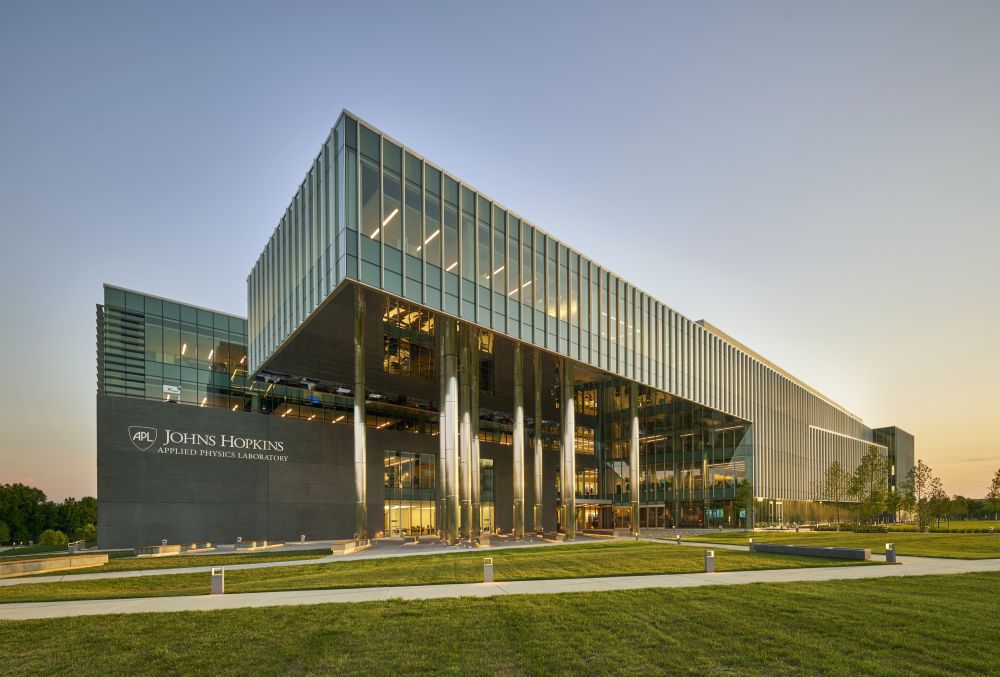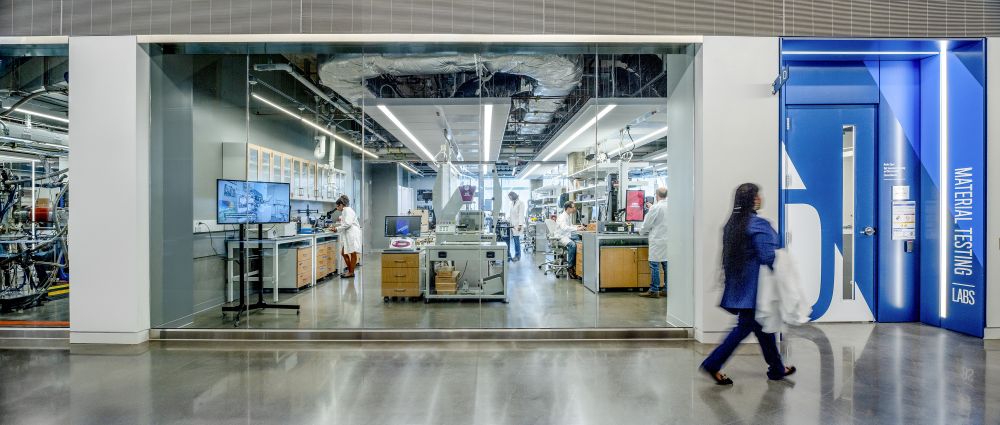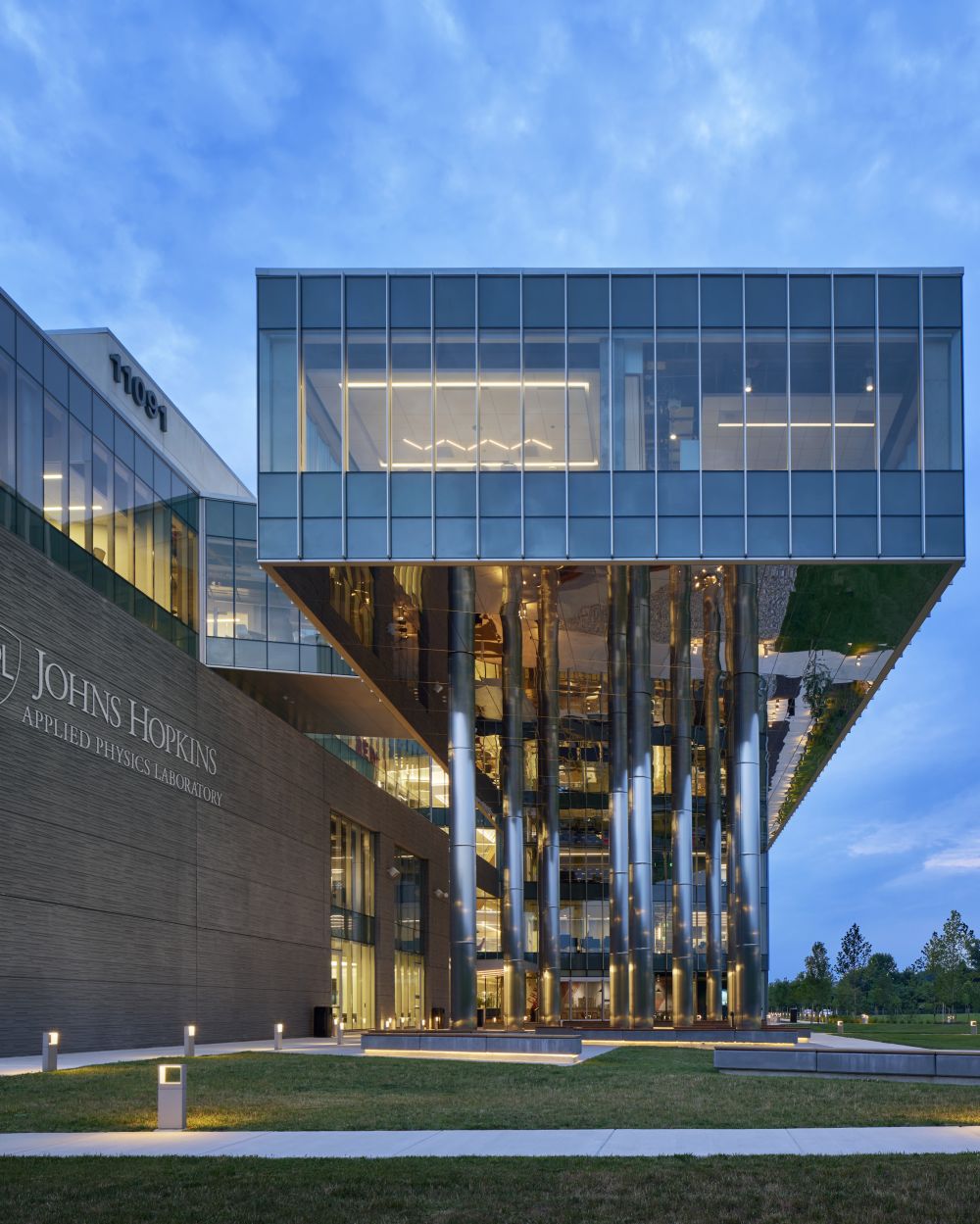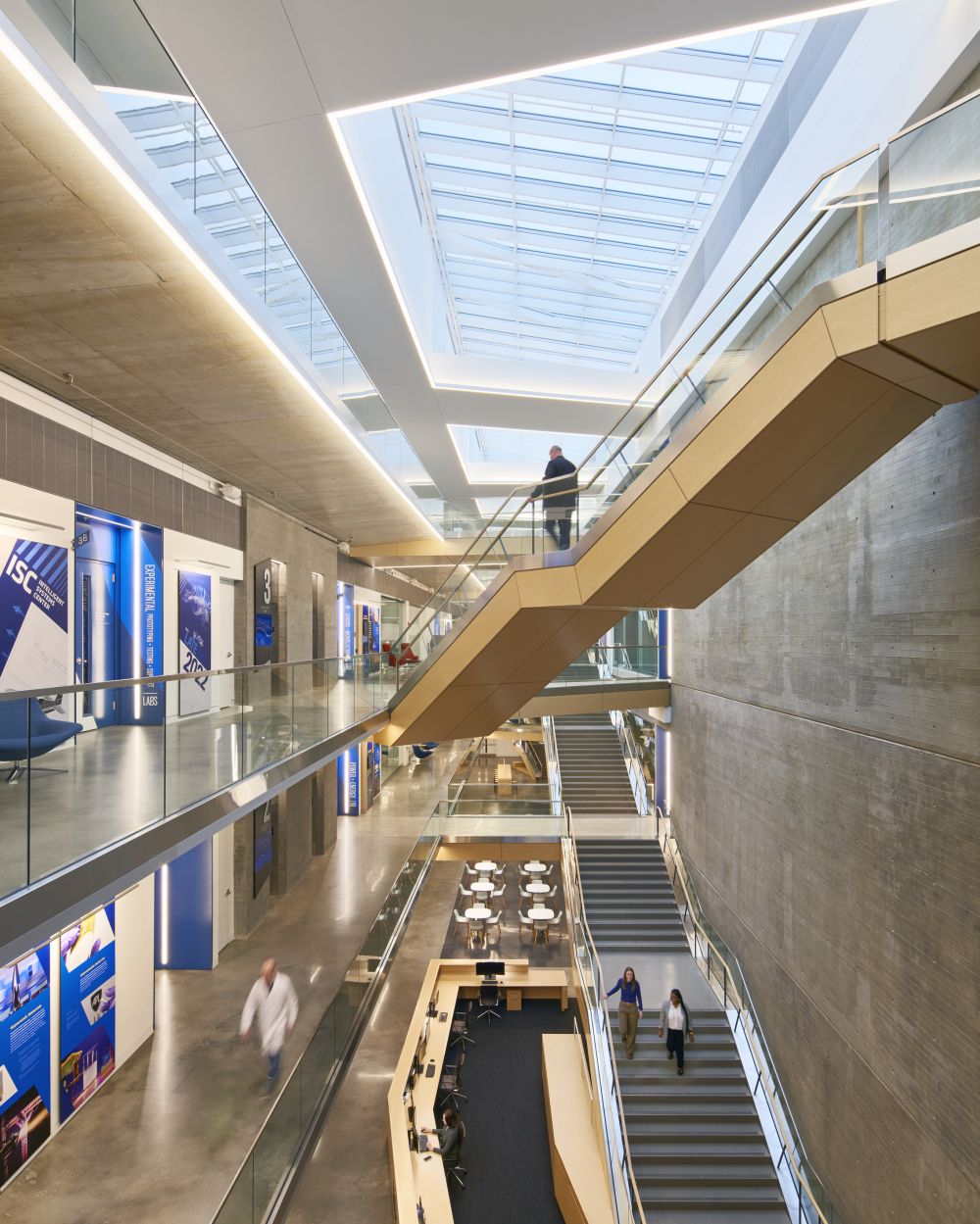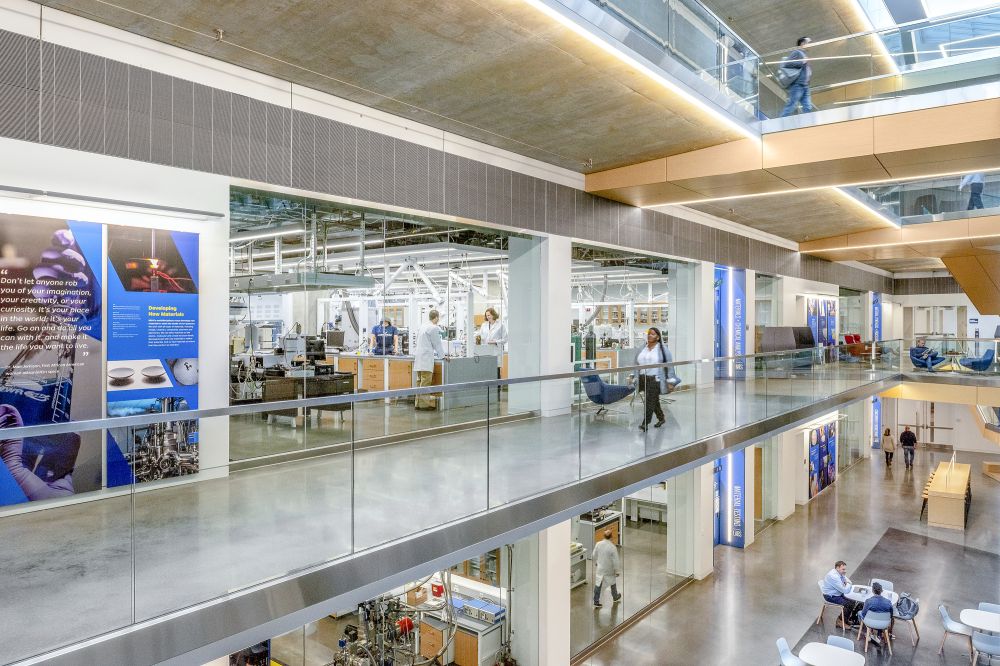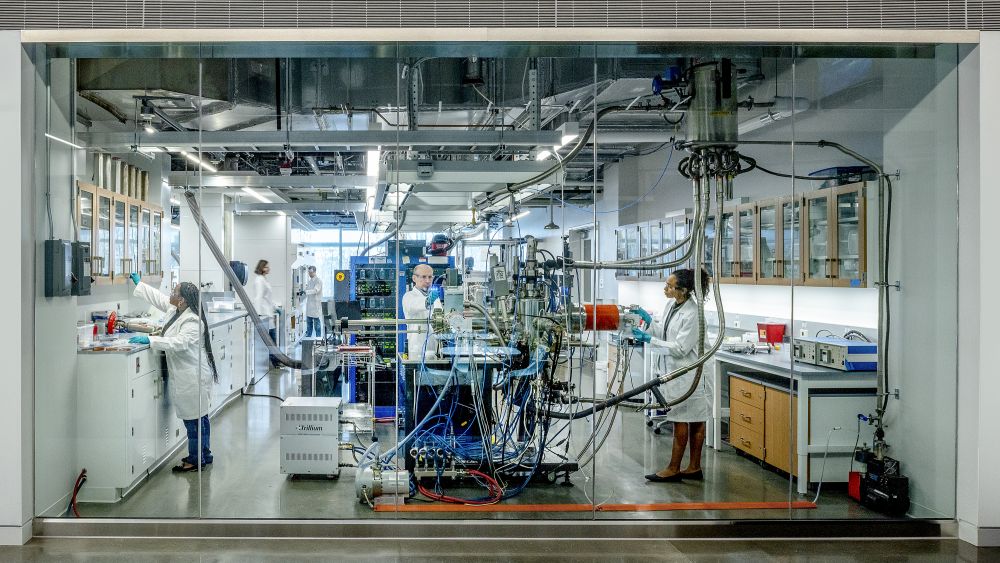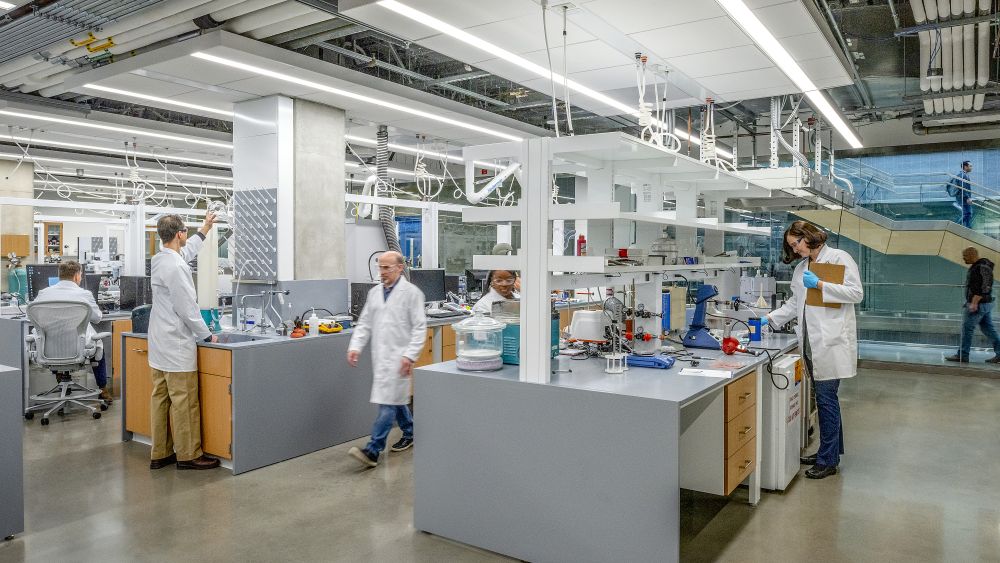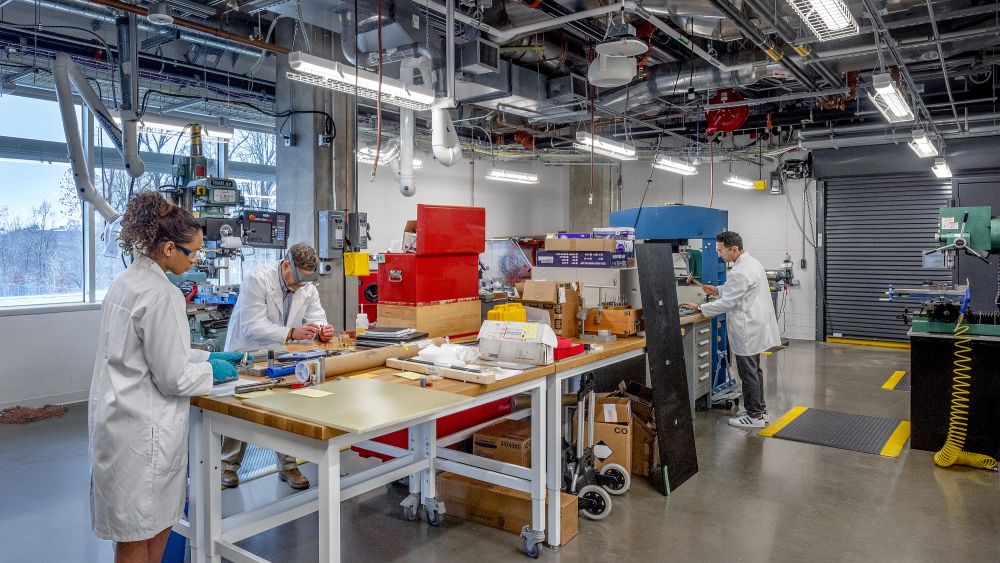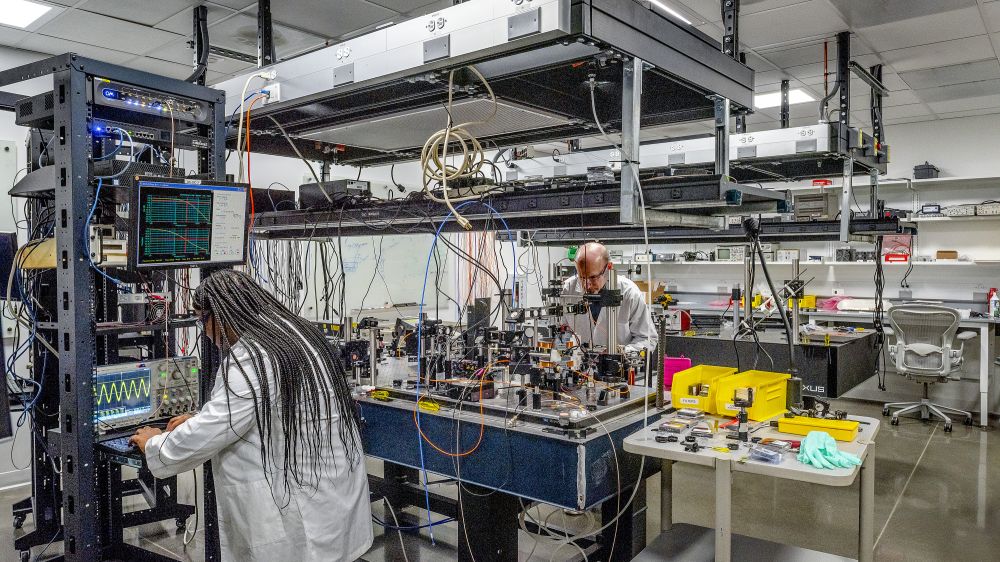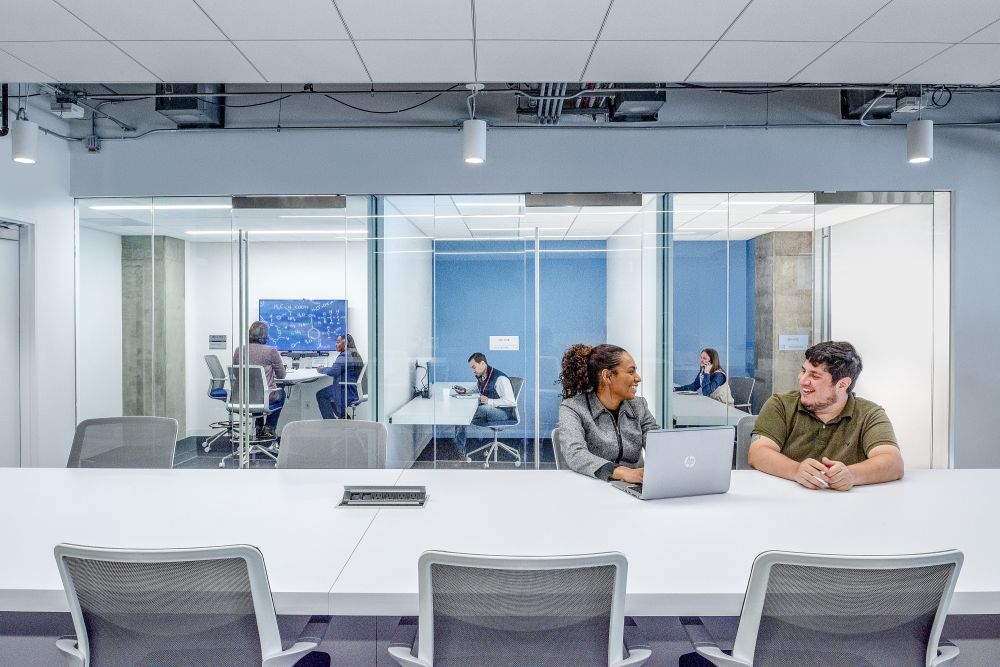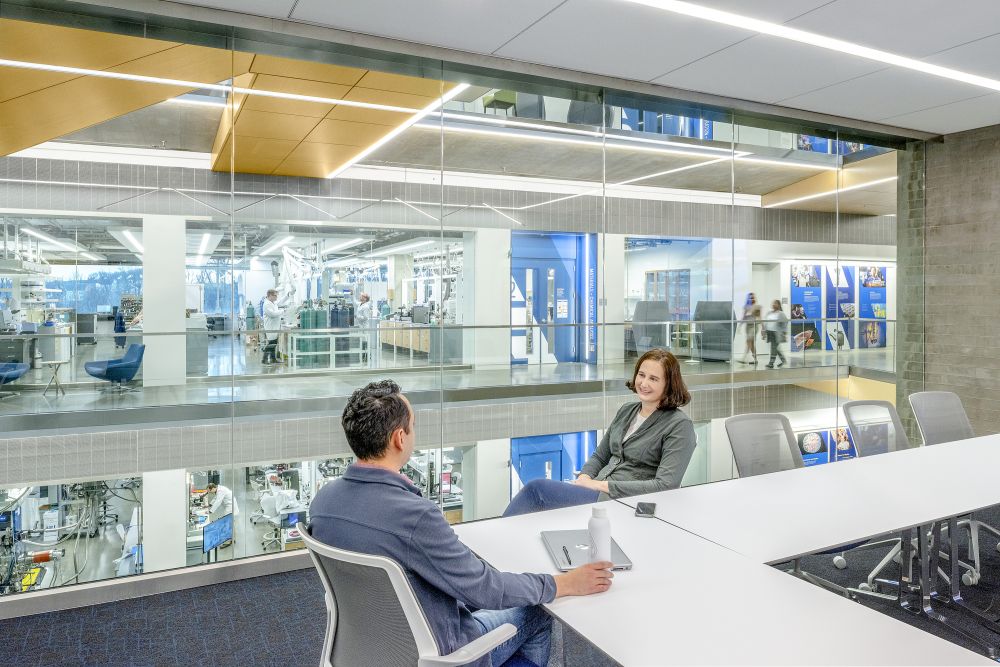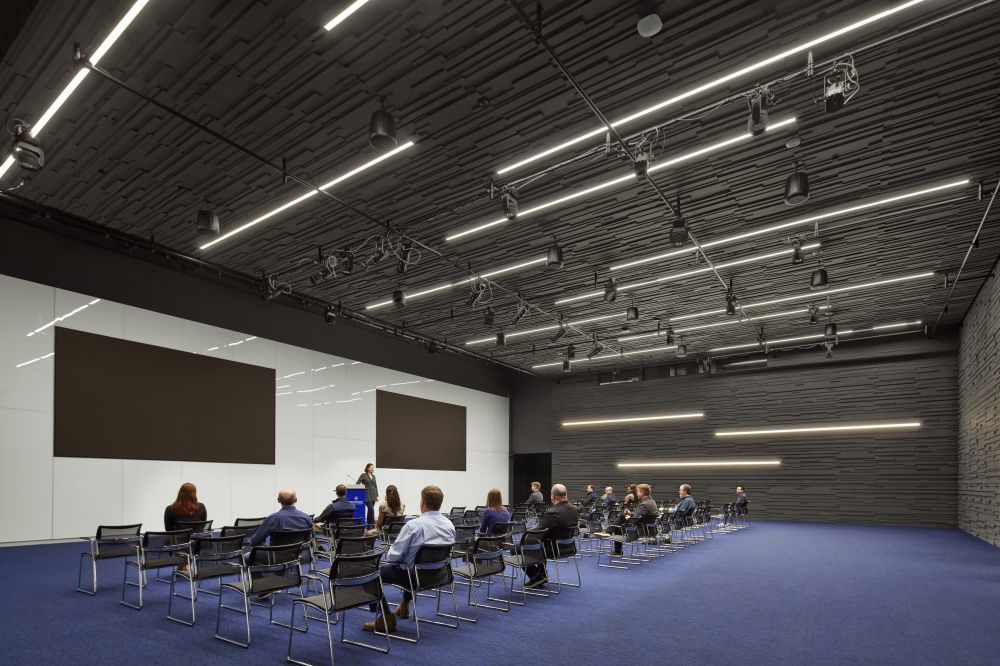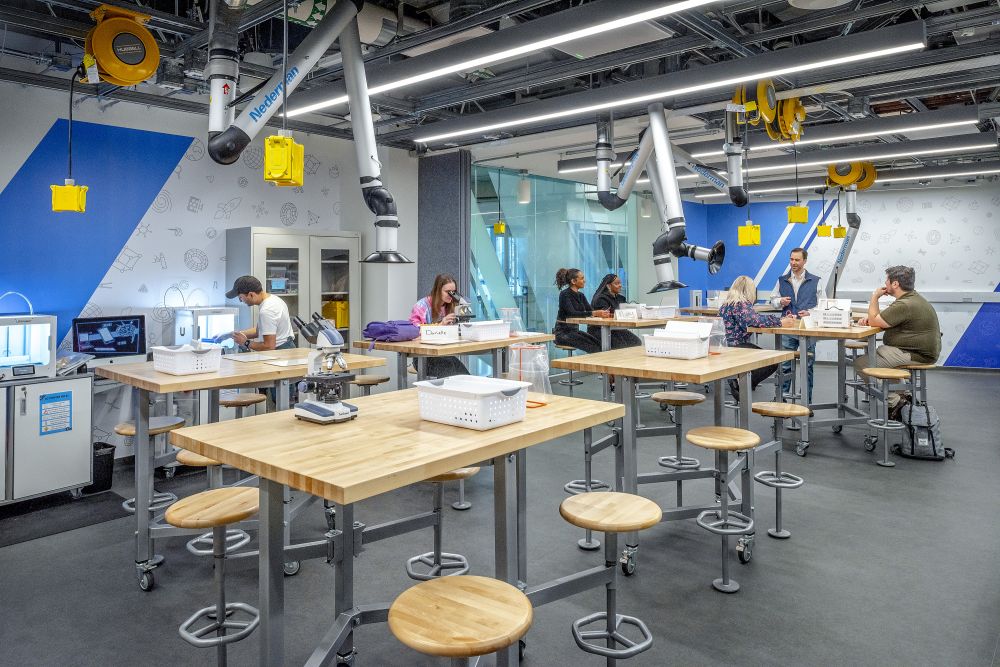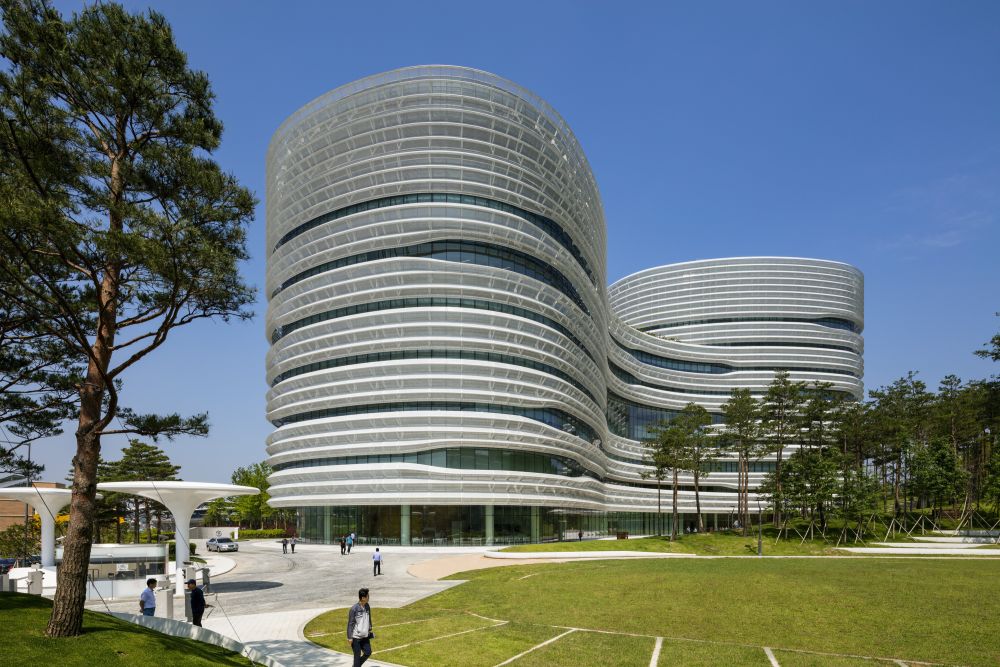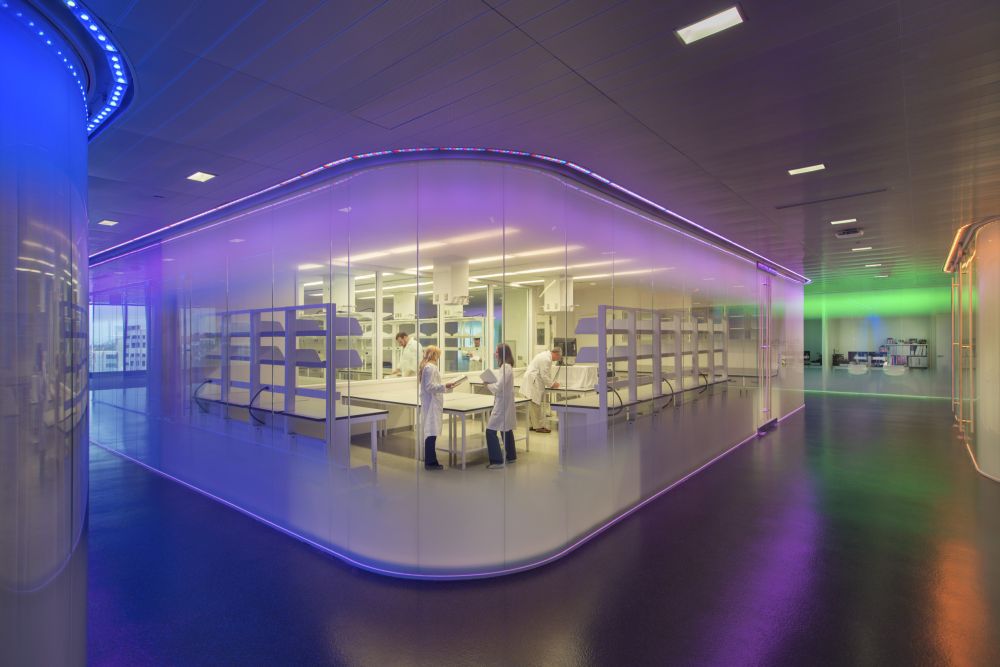Johns Hopkins University Applied Physics Laboratory, Building 201
Designing the future of research for the nation’s top scientists
- Client
- Johns Hopkins University Applied Physics Laboratory
- Location
- Laurel, Maryland, United States
- Size
- 263,000 square feet
- Status
- Completed
- LEED Silver Certified
The Johns Hopkins Applied Physics Laboratory (APL) Building 201 is a veritable wonderland for scientists, boasting cutting-edge tools, equipment and laboratories that push the boundaries of research and development. Whether unraveling the mysteries of the universe, pioneering new materials, or confronting complex national security challenges, Building 201 equips researchers with everything they need to explore new frontiers.
The building houses APL's Research and Exploratory Development Department (REDD)—a powerhouse of multidisciplinary thinkers whose work in hard science, engineering and advanced fabrication drives groundbreaking discoveries. With a team of more than 650, REDD is recognized as one of the most dynamic and influential research groups in the world.
A new home for REDD
Prior to Building 201, REDD’s teams were spread across the APL campus in 87 independent laboratories located in eight buildings with limited adjacency between departments and labs, and a fragmented structure. These legacy work environments consisted nearly entirely of inflexible single- or double-occupancy offices paired with constrained and outdated conference rooms as the only form of collaborative space. A completely new kind of laboratory and scientific workplace was needed—one designed for the collision of many types of research and scientific disciplines under one roof.
Design that celebrates discovery
Our design team emphasized the new building should itself be an embodiment of the important physics research that will take place within its walls. The building’s overall design promotes scientists’ interaction through openness, transparency and visual connectivity; leverages workplace strategies to integrate lab and office environments; and helps to increase connections to the university and outside industries.
As visitors step into the building, eyes are immediately drawn to the sight of natural light pouring into a four-story atrium, illuminating every corner with a warm glow. Seven steel-framed bridges span across the atrium from the gallery corridor to the north wing, connecting people and ideas from different levels and departments. Five monumental stairs link the bridges, providing a physical manifestation of the connections that are being made.
Across the interiors, architecturally exposed concrete is a common theme, serving to further the goal of expressing the science behind the design. The building's design not only promotes collaboration and innovation but also showcases the beauty and functionality of science and architecture coming together in perfect harmony.
Complex science, flexible solutions
There are six research programs in the REDD mission area: Alternative Computing Paradigms; Biological and Chemical Sciences; Human and Machine Intelligence; Physics, Electronic Materials, and Devices; Robotics and Autonomy; and Science of Extreme and Multifunctional Materials. Because Building 201 is the “Swiss Army knife of labs,” a multitude of diverse lab types, even labs within labs, support these research programs.
Shared core facilities include state-of-the-art imaging equipment, such as two Scios Dual-Beam SEMs, a CT x-ray image acquisition unit and a photon emission microscope. Optics labs, which range from high-powered lasers to molecular spectroscopy, feature tight environmental controls, including VC-E vibration criteria, low-humidity control and dust-free environments.
Connections unfolding everywhere
The primary challenge before Building 201 opened was that different teams and functions were not well connected, leading to missed opportunities for knowledge sharing, support and joint innovation. Pulling in our Blue Cottage of CannonDesign workplace strategists, we designed the new building to change this by promoting interaction among scientists through open and transparent workspaces that encourage visual connectivity and provide boundless choice in how and where people work.
Inspiring the next generation of STEM students
The STEM Academy is an afterschool program for middle and high school students aimed at increasing their knowledge and interest in pursuing related college majors and careers. The primary goal is not to test and evaluate learners but to offer a supportive environment to learn more about STEM skills and careers.
Building 201 includes dedicated space for the STEM Academy, right near the main entrance. The teaching labs are encased in glass, allowing students to see out into the atrium, and conversely, allowing researchers and employees to see students learning in the space.
